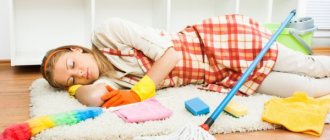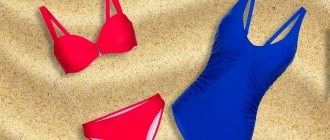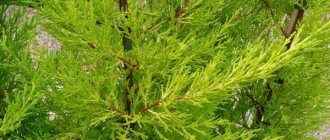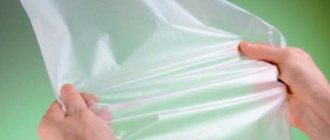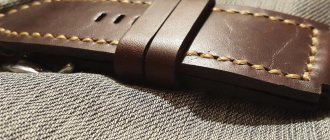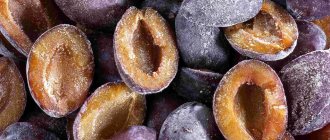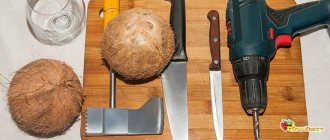To clean laminate flooring, you will need tools and special chemicals that take into account the characteristics of this material.
How to remove scuffs and swelling from laminate flooring at home, what cleaning products are best, read on.
Cleaning the coating
Not all cleaning methods are suitable for caring for laminate flooring - it is necessary to take into account the specifics of the material . Both dry and wet cleaning are acceptable, but must comply with a number of rules.
The organization of the floor covering is carried out by laying individual boards end-to-end using special protruding strips, “locks”. And it is precisely these areas that subsequently become a weak point during cleaning, since moisture and the preparations used for cleaning can easily penetrate into the cracks.
Dry
The most harmless method for laminate flooring is dry cleaning, which can be done with brooms and brushes with soft bristles. If you choose the right tool, such care cannot harm the surface of the floor covering. Dry cleaning can be carried out frequently, without limitation - as needed.
Wet
Washing laminate floors requires care. In addition to choosing cleaning equipment, it is important to remember that the coating does not allow excessive moisture and the use of aggressive chemicals.
This limitation is due to the fact that the wooden base has the ability to absorb moisture. Significant wetness can lead to deformation and loss of appearance of the laminate.
Very frequent washing also causes no less damage to the laminate. The best option to maintain cleanliness and not harm the surface is once every 3 or 4 days. An exception is the need for extraordinary cleaning of the floor due to contamination.
About the “relationship” of laminate with water
Only expensive moisture-resistant laminate is not afraid of water, which can be safely installed in the kitchen or bathroom. This class includes HDF panels with a large volume of resin, as well as modern vinyl laminate (PVC tiles). Prolonged contact with large amounts of water is contraindicated for other laminated coatings.
What can happen:
► If there is a flood or a sewer breaks, the coating will deform on the same day after a few hours of being under water.
► If, when cleaning, you pour a bucket of water on the laminate every time and wash the floor like a sailor, the slabs will become deformed and swell after 2-3 extreme wet cleanings.
► If during the process of washing the floor you do not wring out the mop head and do not wipe the floor dry, the laminate will swell in 2-4 months.
Note: laminate is a kind of layer cake. In the center of the panel there is a compressed MDF or HDF board, under which there is a waterproof stabilizing layer. Decorative paper with a pattern imitating a cut of wood is fixed above the stove. The structure is “crowned” with a single- or multi-layer protective coating that prevents moisture and UV rays from reaching the remaining components of the “pie.”
The weak point of laminate flooring is the seams through which moisture can seep into the wood board. Laminate floors that were installed the old fashioned way - with glue - are more “sensitive” to moisture. If the coating is laid using modern floating floor technology (using Click-locks), the risk of water damage to the panels is significantly reduced.
Order apartment cleaning in St. Petersburg and Leningrad region
What is the best way to wash?
Cleaning laminate flooring requires preparation - choosing tools and detergents.
Required Tools
The best option for a mop is with a microfiber cloth . This material has many advantages compared to nozzles made from other types of materials. If microfiber is not available, soft cotton can be used.
Rags made from coarse fabrics are prohibited, as are rope mops that leave too much water on the floor.
You can wash the coating with your hands and a mop . In this case, the type of nozzle must meet the same requirements as rags:
- softness;
- good water absorption;
- no protruding fasteners;
- lack of scrapers to remove water;
- no additional abrasive attachments for better cleaning of dirt.
Detergents: top 3
For regular periodic cleaning, you can even do without detergents. But from time to time it is advisable to wash the floor with special preparations.
You need to choose those that are intended for laminate and have the appropriate mark on the packaging. Household chemicals for laminate flooring often have additional capabilities - they prevent stains, soften water, etc.
Bagi
The product produced in Israel is suitable for processing laminate and cork flooring. The product contains linseed oil. The product removes even complex stains and adds shine. Price – up to 400 rubles for a container of 550 ml. Read reviews here and here.
Emsal
The product, produced in Germany, prevents dust from settling, cleans the surface effectively and carefully, protecting the seams. The composition contains antistatic components . Price – up to 450 rubles per 1 liter. Read reviews here, here and here.
Mellerud
The cleaner is intended for the care of veneer and laminate floors, as well as cork. The drug removes surface contaminants, including greasy ones, as well as shoe marks. Cost - 620 rubles on average per 1 liter.
Step-by-step instruction
To wash laminate flooring according to all the rules, you must follow the following sequence of actions:
- Perform dry cleaning. To do this, you can use a broom or a brush with soft bristles.
- Vacuum the coating, also choosing the nozzle carefully - it should not be hard.
- Prepare a bucket of water.
- Dilute the floor cleaner according to the instructions for the product.
- Moisten a cloth or nozzle in the prepared solution.
- Squeeze.
- Wipe down the laminate.
- As necessary, you need to rinse the rag and use it again when moving to a new area of the floor.
- Wipe the laminate surface dry.
Additionally, the coating can be rubbed with a special compound to add shine.
Vacuuming
Using a washing vacuum cleaner can make the cleaning process easier, but it also has some disadvantages. The procedure for using the device is completely similar to washing any other coating.
It is better to give preference to vacuum cleaner models that have the following set of functions:
- adapted for cleaning laminate flooring;
- allow you to regulate water pressure;
- There is a nozzle for very quickly collecting water from the floor.
Advantages:
- Fast cleaning.
- High quality surface cleaning.
- Availability of various attachments.
Flaws:
- Vacuum cleaner brushes are rougher than the recommended microfiber and can damage the surface.
- The vacuum cleaner uses quite a lot of water, which leads to waterlogging of the coating.
- Frequent use of the vacuum cleaner may cause the coating to become discolored.
The use of a washing vacuum cleaner is more suitable for laminate flooring with increased moisture resistance, and is not advisable for budget types.
Steam generator application
The principle of operation of the steam generator is to carry out cleaning by supplying hot steam. Such intense exposure can be hazardous to the coating .
Coatings with low wear resistance tolerate such washing the worst. Such processing is allowed only for coatings of class 32 or 34, with mandatory wax impregnation.
An alternative option is to use a steam mop . This device has a milder effect, but its use should also be limited. This is due to the fact that steam easily penetrates into the cracks of the joints, into the areas most vulnerable to external influences, and can contribute to the deformation of the laminate.
Removing stains
Some stains are very difficult to clean. But even the most difficult to remove stains can be combated using both folk remedies and special chemicals. Since the latter are not cheap and are often not available at the right time, pay attention to the home cleaning methods presented in the table.
Table - Methods for eliminating heavy contaminants
| Type of contamination | How to clean laminate flooring |
| Stains of tea, watercolor paints | — Baby shampoo; — dishwashing detergent; - baby liquid soap |
| Wine and cognac stains | - Ethanol; - shampoo for children |
| Traces of markers, pencils, lipstick | — Triple cologne; - methyl alcohol |
| Gum | — Acetone (after freezing with ice); - nail polish remover |
| Oily stains | — Windshield wiper; - acetone |
| Ink | — Washing powder; - ink remover |
| Shoe marks | — Regular eraser; - warm water |
| Blood | — Windshield wiper; - hydrogen peroxide |
| Shoe polish | — Acetone; - nail polish remover. |
How else can you wash laminate flooring to avoid streaks? For light-colored surfaces, use baking soda by adding a tablespoon to a liter of water. And if you want to eliminate stains and make dark laminate shine, use citric acid.
Video on the topic
Adding shine
In addition to dry and wet cleaning, polishing can maintain the attractive appearance of the floor covering. It is carried out on a cleaned laminate.
To add shine to the coating you will need the following ingredients:
- warm water (4 tbsp);
- lemon juice (2 tbsp.);
- vinegar (3 tbsp.);
- dishwashing gel (5-7 drops).
Preparation of the composition:
- Combine lemon juice, vinegar and water in a container.
- Stir.
- Add gel.
- Stir again.
Use the prepared product for rubbing and polishing laminate flooring. There is no need to rinse off the applied composition. When rubbing the laminate, it is recommended to organize ventilation of the room.
Alternatives to the Flounder Mop
You can wash laminate flooring without streaks and waterlogging not only with a flounder mop. Cleaning robotic vacuum cleaners, steam cleaners, spray mops and steam mops provide high-quality results.
► Robot vacuum cleaner with wet cleaning function - will wash laminate floors on a schedule using a damp microfiber nozzle, which will be evenly moistened with water or cleaning solution from a removable container.
► A steam mop or a floor steam cleaner with a special nozzle for washing floors will wash and disinfect laminate flooring without the use of chemicals.
► Spray mop - easily cleans laminate flooring from dirt and shoe marks using a small amount of water or cleaning solution. Water is sprayed onto the area of the floor in front of the mop platform.
Read the blog “Washing floors correctly: choosing effective equipment with a wet cleaning function”
Elimination of defects
During operation and as a result of improper care, defects may appear on the laminate. In case of minor damage, it is possible to repair the damage even on your own.
How to remove bloating?
In cases where the laminate has risen at the joints, it will not be possible to cope with the problem using easy methods. The solution to the problem is dismantling .
It is possible to eliminate the defect yourself only if you have experience. If it is not there, you will need the help of professionals, since the baseboard will need to be removed and the covering will be partially dismantled.
If the cause of the swelling of the boards is spilled water, then you can try to cope on your own:
- wipe the surface;
- ensure drying.
Scuffs and scratches
Scratches and abrasions, if they are small, can be rubbed with flannel dipped in vegetable oil. You can also use a wax pencil of a suitable shade and polish.
A special putty and paste will help deal with deeper damage (chips, dents and scratches) . The product is carefully applied to the defect site, filling the missing volume. After the composition has dried, the treated area is sanded and opened with varnish.
How does the indoor microclimate affect laminate flooring?
An unnoticeable, but very important stage of floor covering care is maintaining a suitable microclimate in the room. Laminate, like many other wood products, requires special temperature and humidity conditions. Fortunately, it coincides with the most comfortable conditions for human living. The air temperature in a room with laminate flooring should ideally be 18–20 °C. Suitable relative humidity for flooring is 50-60%.
Temperature is not as critical a factor as moisture. High humidity is one of the worst (and, unfortunately, most common) enemies of laminate flooring. If you spill a puddle of water on the flooring and do not wipe it off for a long time, this will lead to swelling at the joints of the boards.
Laminate flooring that is swollen at the joints is difficult to fix - it’s easier to replace damaged boards
If the room itself is maintained at too high a humidity level, the load-bearing layer will deteriorate. This will lead to significant deformation of the coating. This is often popularly referred to as “raised laminate.” It is almost impossible to repair such damage.
A “bulging” laminate is not only unsightly, but also inconvenient - it’s easy to trip over it
What not to do and why?
During the cleaning process, it is important to remember a number of prohibitions. This will prevent unforgivable mistakes and spoil the coating.
The main restrictions include the following:
You should not use cleaning equipment on hard, much less abrasive, surfaces. Failure to comply with this rule may result in damage to the material.- The tools used should not have protruding, protruding metal pins or other elements that could accidentally touch the laminate and cause scratches.
- Do not use aggressive household chemicals, as this can lead to stains and destruction of the top layer.
- It is forbidden to overly moisten a floor covered with laminate, as this can cause deformation of the boards and damage to all layers of the coating.
Detergents
In retail chains you can buy different streak-free laminate cleaners that differ in composition. Here are the most popular:
- Mellerud Bio - has a natural composition to eliminate dirt, dust, oil films;
- Emsal Laminate is a soap-based product that is preferred due to its gentle care and antistatic effect;
- Pronto – prevents streaks and makes the laminate surface shiny;
- HG is a concentrated product whose action is aimed at creating a protective film that prevents the action of moisture;
- Laminol is a substance for softening water used for industrial purposes. The advantage is that it has an antibacterial effect and does not need to be washed off.
When choosing a detergent, it is important to select a product whose purpose indicates that it can be used for washing laminate flooring. It is strictly forbidden to use chlorine-containing products for wet cleaning, as well as products that contain acid or alkali. The presence of the listed components leads to the destruction of not only the protective and decorative layer, but can damage the wood board.
Prohibited substances
Not every product is suitable for cleaning laminate floors. The following substances have a negative effect on the material:
- Bleach and chlorine-containing compounds. They discolor the surface, making it paler. Such means include, for example, “Whiteness”.
- High concentration acid and alkali. Preparations with these substances corrode the outer layer that serves for protection. They can also destroy fiberboard over time.
- Polishes and compounds that are intended for processing other coatings. The products are used specifically for laminate flooring - others will leave stains, streaks, and cloudiness.
- Disinfectants and other products containing ammonia. As a result of application, the shine is lost.
- Do not use large amounts of water. It gets into the cracks, and the fiberboard swells and the coating deteriorates.
- It is not recommended to dilute laminate floor detergent in water in more quantities than required.
Useful tips for caring for laminate flooring
- Daily dry cleaning.
- Wash floors when dirty, but no more than 3 times a week.
- Try not to drop heavy, sharp objects. Warn your household about this.
- Place soft pads on the legs of sofas and cabinets to prevent damage to the laminate if accidentally moved.
- Having a mat at the front door and getting into the habit of wiping your feet will reduce the amount of litter in your home.
- Walk around the apartment in slippers or socks, this will extend the service life of the coating.
- For guests, keep an extra set of indoor soft shoes.
- Clean up spills quickly and dry the floor.
- Correct minor scratches and defects immediately using wax pencils. Seal deeper and more serious cracks at the seams or ends with a specialized sealant. Make sure you have sealant and a matching pencil when purchasing laminate flooring at a hardware store.
How to deal with difficult stains?
Traces from the soles are erased with an eraser or a solution of baking soda. Chewing gum is removed with a plastic scraper. Residues are wiped off with a cloth soaked in hot water.
If the laminate is stained with blood, you can use hydrogen peroxide with ammonia or a cleaner for windows and mirrors: after sprinkling the stain a little, wipe it with a rag.
The bulk of the nail polish is usually removed with a plastic spatula. Apply a warm, damp cloth to any remaining stains for 30 seconds. If this does not help, carefully wipe the problem area with denatured alcohol along the pattern.
How to remove wine or juice stains on laminate flooring? Regular wet wipes will do.
Grease stains in the kitchen are frozen and scraped off with a plastic spatula.
Prevents contact with moisture and increases service life
- Place indoor flowers in pots placed on the floor in deep trays so that excess water does not overflow when watering.
- Use blinds and curtains on windows to reduce constant sunlight on the floor surface. Shade rooms and diffuse direct rays, then the color of the floor will remain rich and the texture smooth and shiny.
- Do not rub in mastics or any other wax emulsions. The use of these products will increase the risk of injury, and the service life will only be reduced. Achieve a glossy shine by rubbing with a dry cloth or using approved chemical compounds.
- Wipe matte laminate with a dry cloth daily, using light movements without pressure.
- Equip play areas in the nursery or areas near armchairs, sofas, and beds with rugs. This will protect the top layer from stains and abrasion.
